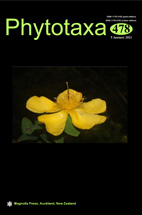Abstract
The distribution of diatom species and their evolutionary histories are largely a result of the complex feedback mechanisms in their environment. Arctic lakes are particularly sensitive to climate changes, and the species within these environments reflect these histories. The diatom genus Pantocsekiella is widespread and notably morphologically diverse. Valves from Pantocsekiella in the Arctic Lake El’gygytgyn spanning the last 1.2 Ma were analyzed using light and scanning electron microscopy to investigate how morphological transitions are related to known regional climate events. Quantitative and qualitative observations yielded a high degree of morphological diversity with multiple morphological shifts often associated with inferred extreme cold events. Principal components analysis (PCA) on quantitative morphological variables demonstrates a gradient in morphological variability through time, with a distinct morphology persisting uninterrupted from ~550-~230 ka warranting the establishment of a new species. Valve size within this interval responds to interglacial-glacial cycles, with the largest initial valves occurring during interglacials suggesting sensitivity to lake conditions related to climate.

